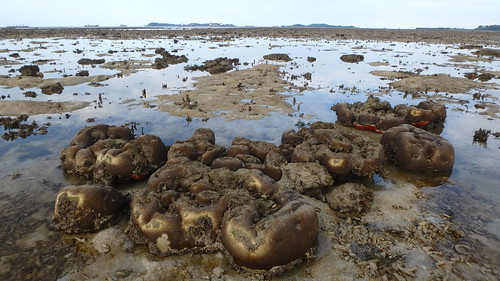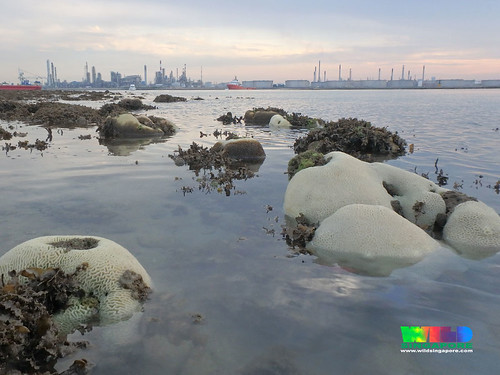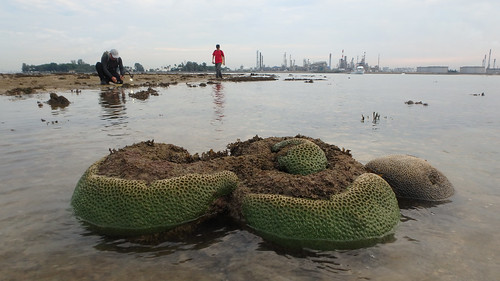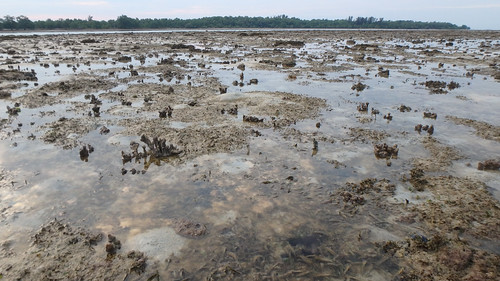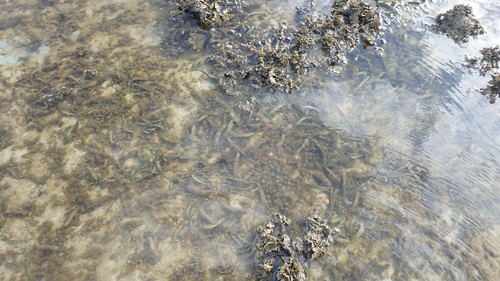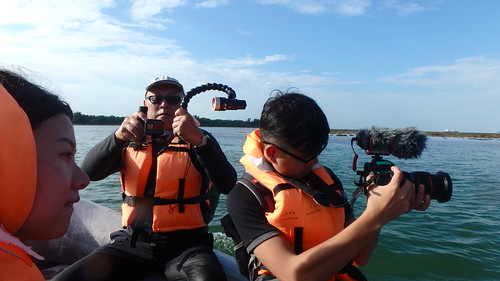It was a relief to see most of the corals were alright, but some of the corals had white patches. The tide was a little too high to get a good look at the reef edge, but I didn't see some of more spectacular large corals and large anemones that I used to see in the past.
During our survey in Aug 2016, it was estimated 30% of the hard corals were bleaching and about 10-15% of the corals had died recently.
Today, the corals were mostly alright.
Boulder shaped Merulinid corals remain the most abundant. I saw many tiny colonies growing on dead coral. There were some small colonies that were unharmed but some had dead patches.
Some of the larger colonies had white patches, and I saw one small one that looked like it was bleaching.
Some of the large colonies had large dead portions.
I did manage to see some small colonies of small Disk corals, Ridged plate coral, Bracket mushroom coral, Mole mushroom coral and a tiny colony of Galaxy coral. I also saw several Brain corals. None of them were bleaching.
The Boulder pore corals I saw were alright. I also saw some Crinkled sandpaper coral, many Anemone corals, some Acropora coral and Montipora coral. All were alright. Although some of the Anemone corals were very pale. I did not see any Cauliflower corals or Carnation corals or Lettuce corals.
We saw two small leathery soft corals and they were alright. I also saw a small patch of Black-and-white leathery soft corals which were alright. The most abundant cnidarian on the shore were Fine feathery soft corals and none of them were bleaching.
We saw a few Giant carpet anemones, none with anemone fishes. I saw a few Frilly anemones, none were bleaching. And one small Fire anemone which looked a little bleachy. But I didn't manage to see any Bubble tip anemones that used to be abundant on the reef edge.
We came across some White-rumped sea cucumbers and many small octopuses who were actively hunting even though it was well past sunrise. As well as some Bigfin reef squids. The black and green mantis shrimp were spotted too.
It was heartening to see lots of seagrasses on the reeflat. Although they were very heavily covered in epiphytes.
These include Spoon seagrass (small and large leaf blades), Tape seagrass (with cropped leaf blades) and what looks like Sickle seagrass and possibly Serrated ribbon seagrass.
This submerged reef lies opposite Pulau Hantu and the petrochemical plants on Pulau Bukom, and is next to Pulau Semakau.

Tomorrow, one more low spring tide. This will be devoted to checking for oil spill impact on our Changi shores.

